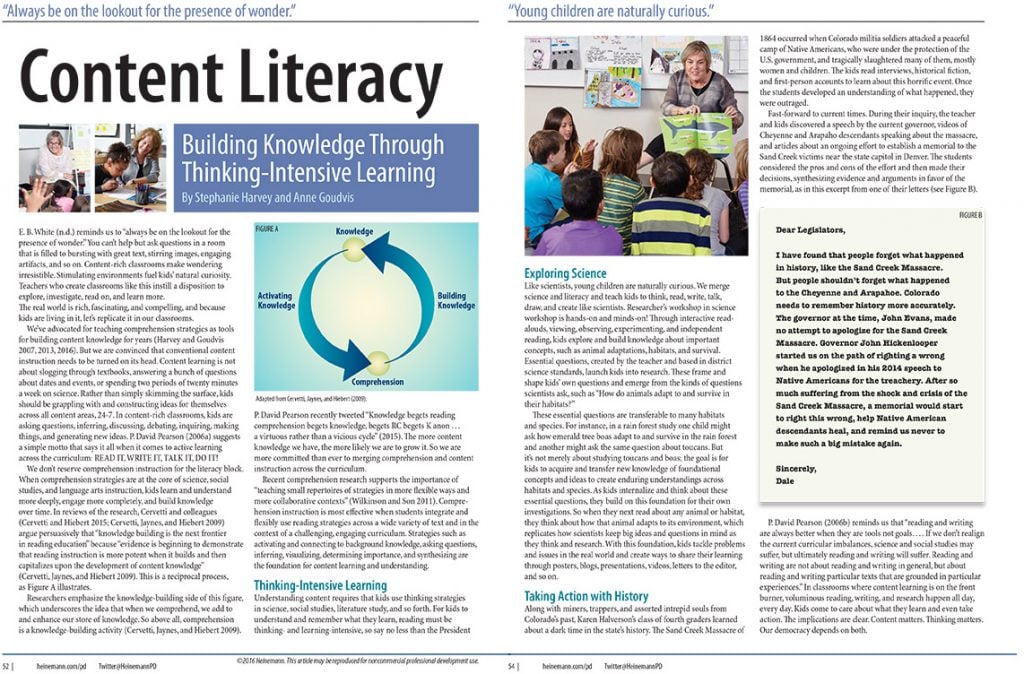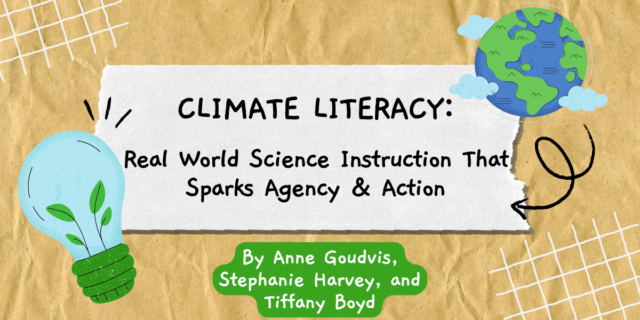
Written By Stephanie Harvey and Anne Goudvis for the Heinemann Professional Development Catalog.
Written By Stephanie Harvey and Anne Goudvis for the Heinemann Professional Development Catalog.
E. B. White (n.d.) reminds us to “always be on the lookout for the presence of wonder.” You can’t help but ask questions in a room that is filled to bursting with great text, stirring images, engaging artifacts, and so on. Content-rich classrooms make wondering irresistible. Stimulating environments fuel kids’ natural curiosity. Teachers who create classrooms like this instill a disposition to explore, investigate, read on, and learn more. The real world is rich, fascinating, and compelling, and because kids are living in it, let’s replicate it in our classrooms.
We’ve advocated for teaching comprehension strategies as tools for building content knowledge for years (Harvey and Goudvis 2007, 2013, 2016). But we are convinced that conventional content instruction needs to be turned on its head. Content learning is not about slogging through textbooks, answering a bunch of questions about dates and events, or spending two periods of twenty minutes a week on science. Rather than simply skimming the surface, kids should be grappling with and constructing ideas for themselves across all content areas, 24-7. In content-rich classrooms, kids are asking questions, inferring, discussing, debating, inquiring, making things, and generating new ideas. P. David Pearson (2006a) suggests a simple motto that says it all when it comes to active learning across the curriculum: READ IT, WRITE IT, TALK IT, DO IT!
We don’t reserve comprehension instruction for the literacy block. When comprehension strategies are at the core of science, social studies, and language arts instruction, kids learn and understand more deeply, engage more completely, and build knowledge over time. In reviews of the research, Cervetti and colleagues (Cervetti and Hiebert 2015; Cervetti, Jaynes, and Hiebert 2009) argue persuasively that “knowledge building is the next frontier in reading education” because “evidence is beginning to demonstrate that reading instruction is more potent when it builds and then capitalizes upon the development of content knowledge” (Cervetti, Jaynes, and Hiebert 2009). This is a reciprocal process.
Researchers emphasize the knowledge-building side of this figure, which underscores the idea that when we comprehend, we add to and enhance our store of knowledge. So above all, comprehension is a knowledge-building activity (Cervetti, Jaynes, and Hiebert 2009).P. David Pearson recently tweeted:
Knowledge begets reading comprehension begets knowledge begets RC begets K...anon...a virtuous rather than a vicious cycle.
— P. David Pearson (@PDavidPearson) June 14, 2015
The more content knowledge we have, the more likely we are to grow it. So we are more committed than ever to merging comprehension and content instruction across the curriculum.




